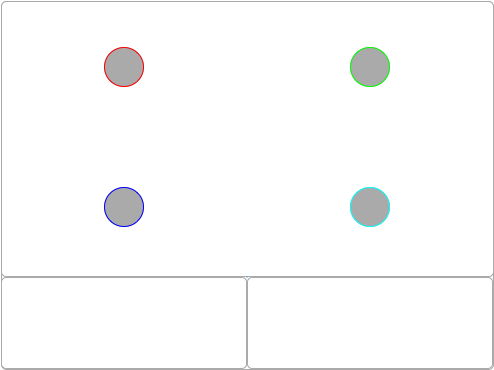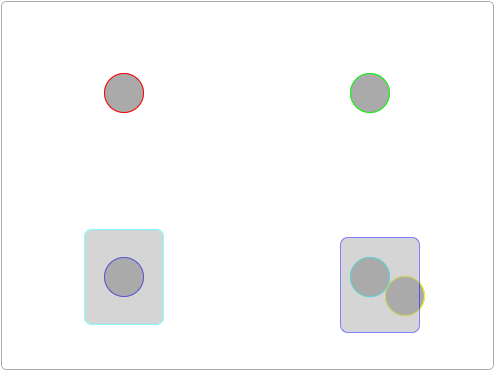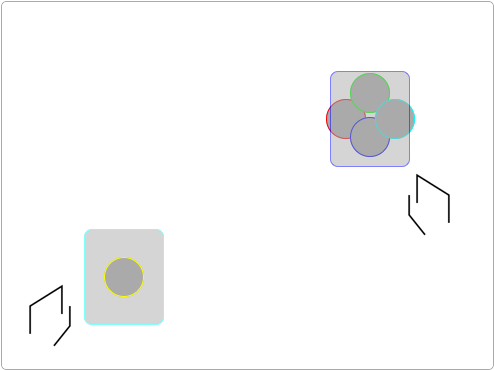Coin Magic Notation
Can Juan Tamariz's Symbolic Method be adapted for coin magic or Close-up magic in general? The answer is positive, and I teach this in my lectures and workshops.
The most important Symbolic Rules
Please hold your device in landscape orientation for best viewing experience.
A coin is represented by a grey circle.
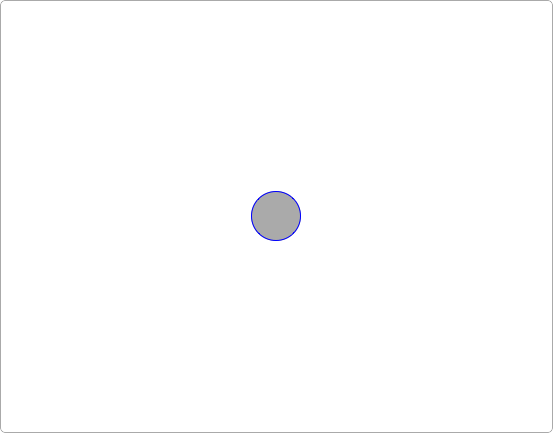
A palmed or otherwise hidden coin is represented by a dashed line around the coin symbol.
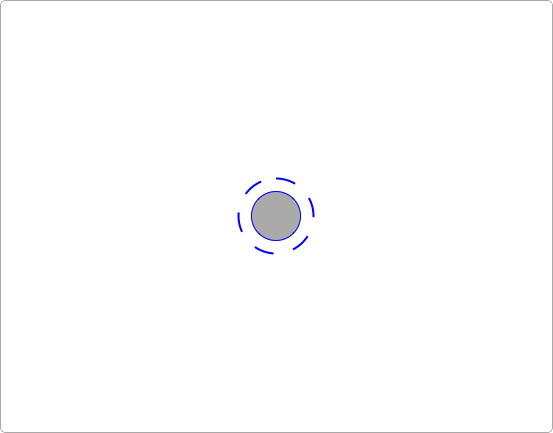
The dashed line indicates that only the magician is aware of this coin.
A coin only believed or assumed by the audience is represented by a dotted line around the coin symbol.
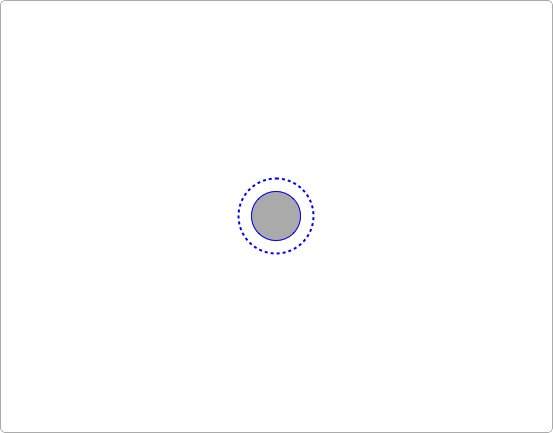
The dotted line indicates that the audience believes this coin exists when in reality is does not.
Hands are represented as seen in the image.

Left and right hands are positioned on the table in a rather natural constellation.
The concept of 'Spaces' serves to represent the location for the objects of interest.
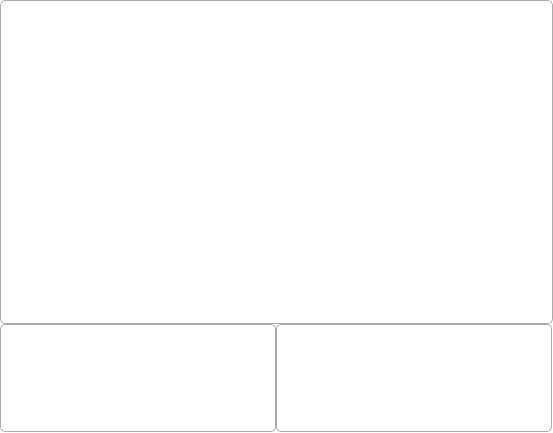
The image shows a large Table-Space, a Space for the left hand, and a Space for the right hand.
This is the predominantly used Table-Hand-Hand Space-set.
The concept of 'Spaces' allows to represent a variety of locations where objects are handled during a routine.
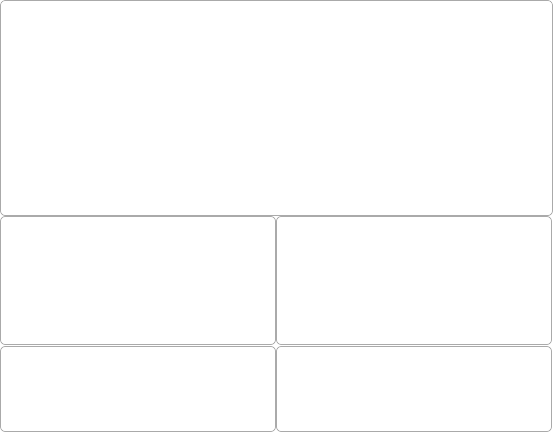
This Table-Hand-Hand-Pocket-Pocket Space-set allows to accurately describe moments that involve the table, hands, and pockets.
The image shows the Table-Space, the Spaces for the left and right hand, and - bottommost - Spaces for the left and right pockets
Read the image as follows.
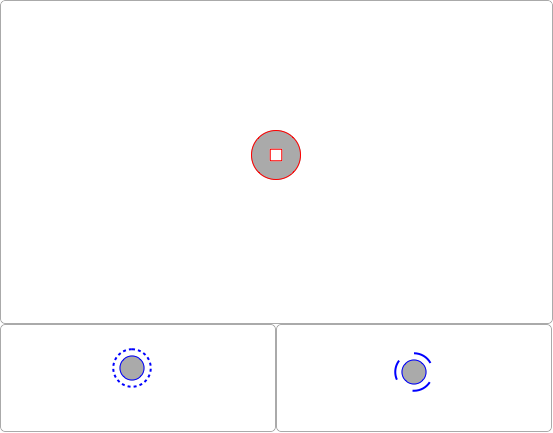
A chinese coin is seen on the center of the table. A silver coin, assumed by the audience in the left fist, is actually palmed secretly in the right hand.
The silver coin, rendered twice, describes the different realities perceived by audience and performer.
Read the image as follows.
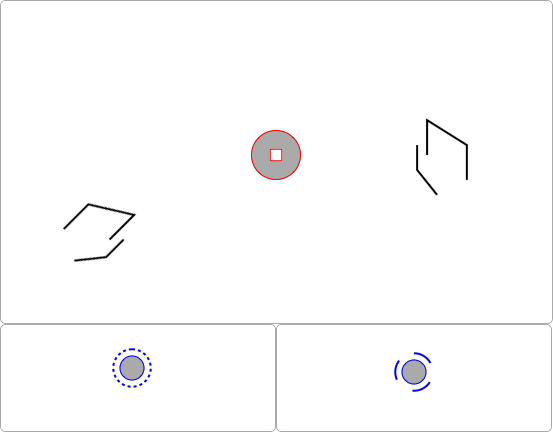
This images describes the same situation seen in the previous image, but with the added information related to the hand positions.
The hands are naturally positioned on the table, framing the chinese coin in the center of the attention. The right hand palms a coin which the audience believes in the left fist.
Read the image as follows.

Two silver coins are seen on the table. A chinese coin, assumed by the audience in the left pocket, is actually palmed secretely in the left hand. The right hand holds a card. The card case is located in the left pocket.
The chinese coin rendered twice describes the different realities perceived by audience and performer.
All Icons created by the Symbolic Matrix app, available on the App Store.
An Example
Below is a brief example. It gives a first glimpse into the possibilities of notation for Close-up magic. New concepts are applied which provide an amazingly rich set of notations to express the essence of many coin and other Close-up tricks.
|
|
Even though the vocabulary of the notation has not been disclosed, you may already be able to roughly translate the information.
Another Example
The next example shows a classic Chink-a-Chink Matrix effect. Physical objects are Coins, Cards and Hands. Local Grammars implement "gone" and "surprize" elements. A Card's inner line indicates it is held at an elevated position, else (without the inner line) it is meant to be lowered to the table. Only the table-Space is used. It is a classic Matrix effect, where cards are rather concealed below cards, and Spaces to express this are not needed.
This sequence is inspired by Albert Goshman, Patrick Page, Chink-a-Chink, p.65-71, Magic by Gosh, Selfpublished, 1985.
You may want to tilt your iPhone to see the grid arrangement.
|
|
The above is an unprecendented presentation of new ways into Close-up magic.
